December 19, 2023 Farm to Zoo (Day 83)
Farm;
Early this afternoon Jack kindly gave us a ride up to the paddocks in the side-by-side so we could meander in the meadows and take pictures. It was a decidedly better day for pictures today too! Clouds passed above us, giving us some sunny moments and though the breeze blew, as it does just about every day here we think, it wasn’t too cold or strong.
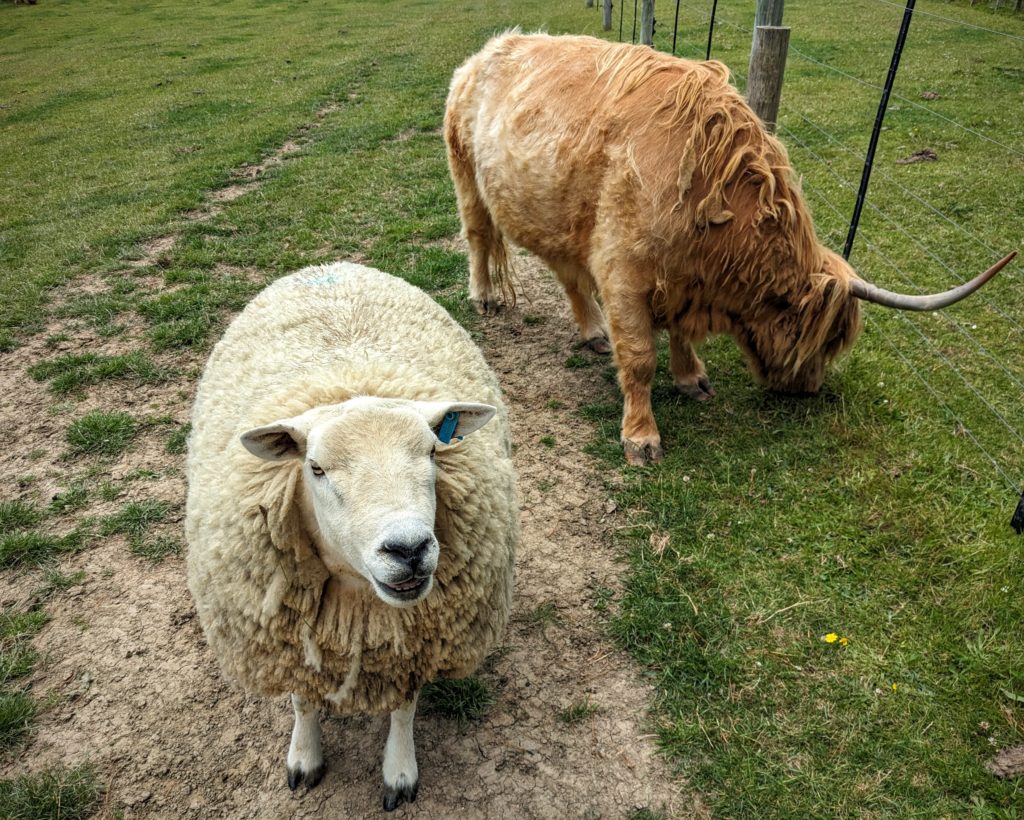
The ram greeted us at a gate, demanding his tribute of pelleted feed for entrance into ‘his’ paddock. We didn’t have any feed with us, so we passed by.
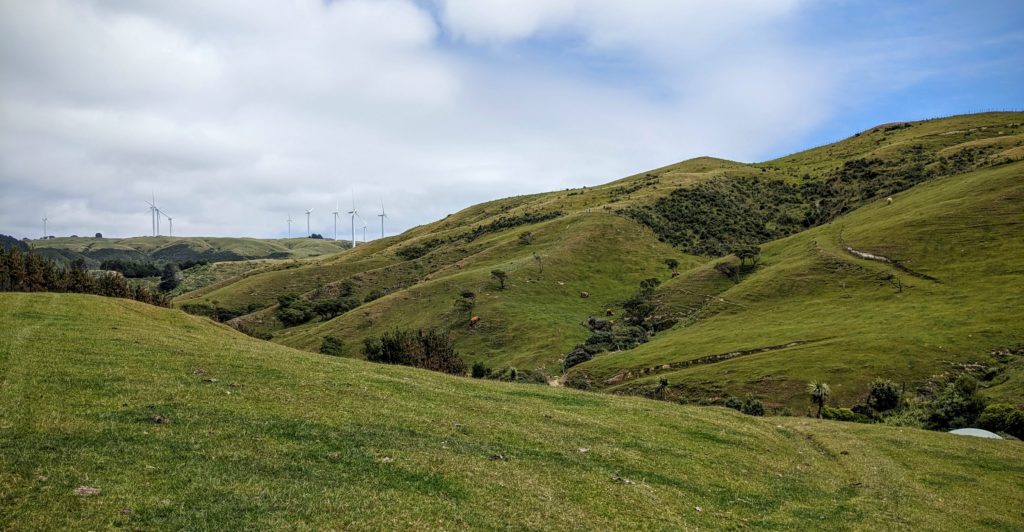
The hills rolled out in every direction. To the south and west you can see the windmills that capture that breeze as it flows from Cook Strait up the coastal hills.
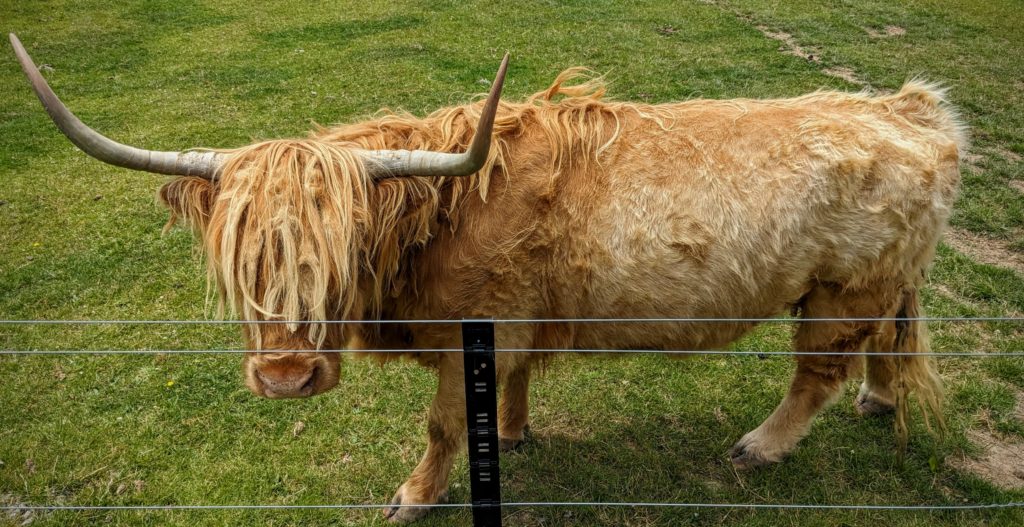
The friendliest of the Highland cows that they “keep as pets now since the bull died” Jack told us. Some of the ladies are in their mid teens, they can live to about 20, considered a longer lifespan than most other breeds of cattle.
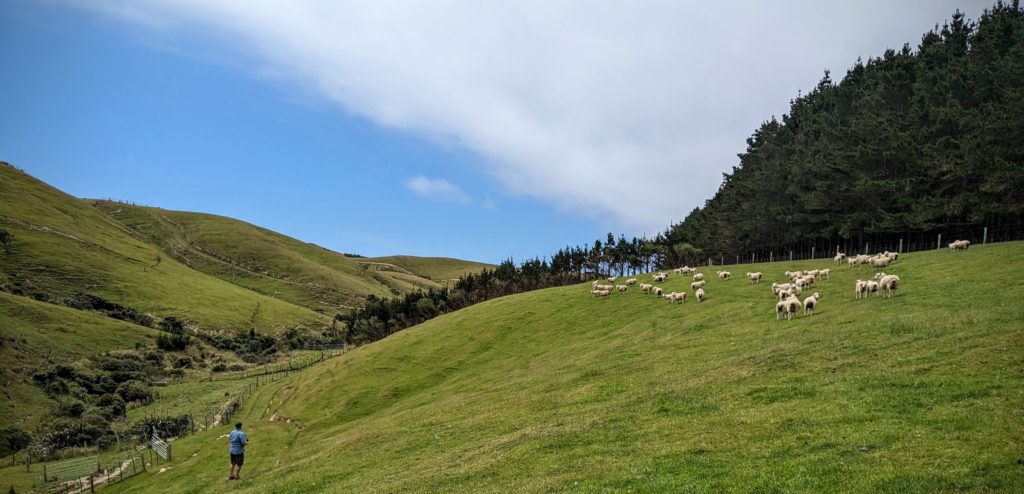
In another paddock is the herd of ewes and this years lambs. This was as close as we could get to them!
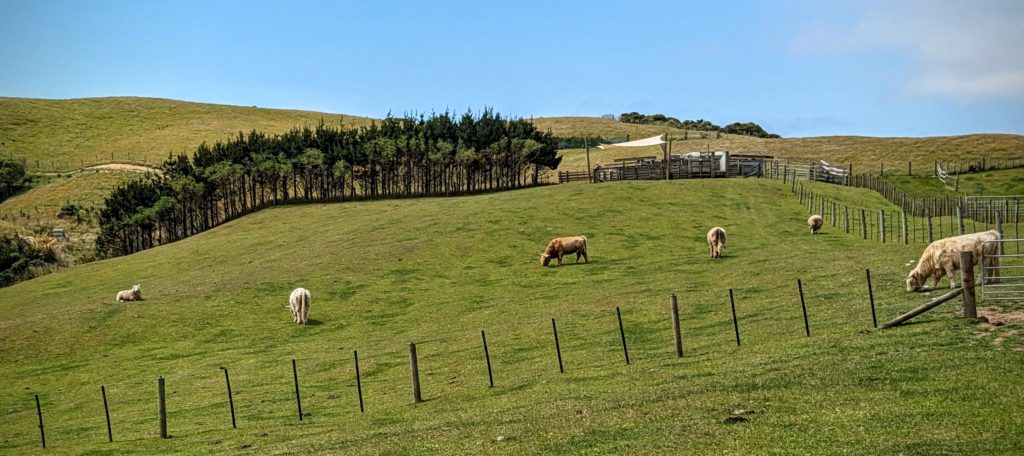
This is the paddock guarded by the ram. In the background is the shearing pen with a shade sail installed for the imminent shearing session.
Zoo;
Not really a zoo, but a wildlife sanctuary, originally called the Karori Wildlife Sanctuary, now called “Zealandia”. Katy and Steve that we met on Friday gave rave reviews of the night tour they took the night before. We tried to book a night tour, touted to give you a possible glimpse of kiwi, but they were all booked up, so we settled for a dusk tour. So after our farm photo tour we got cleaned up, ate a quick dinner and headed the short winding drive down to Karori and Zealandia for our 7:15pm Dusk Tour! We arrived and along with 10 other guests on our tour (a limit of 12 per tour, so book early!) we stepped into the 500+ acre fenced sanctuary to see the sun setting behind the hills overlooking a reservoir.
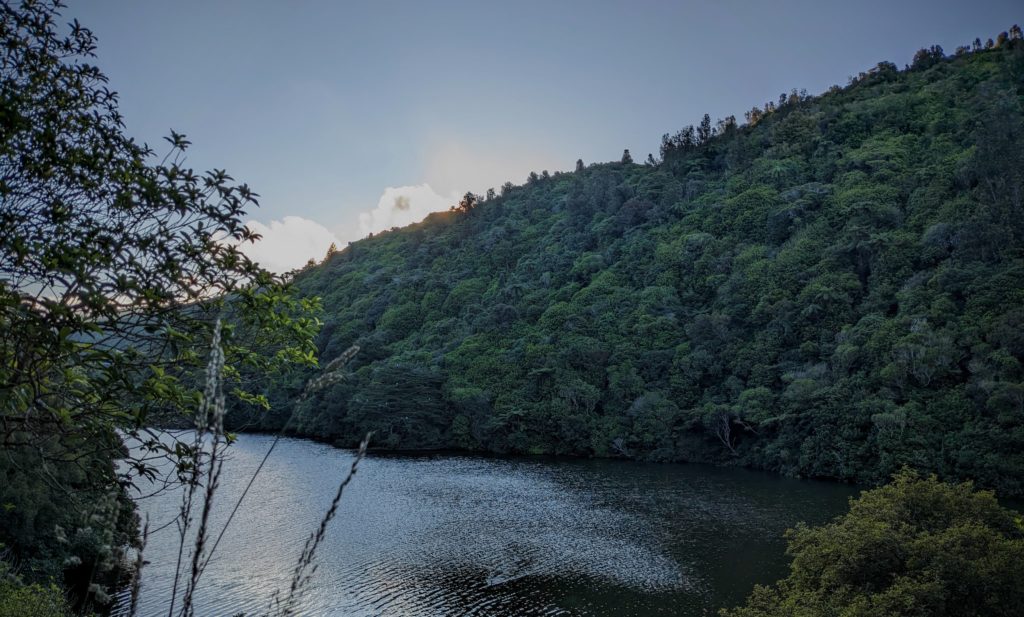
A centerpiece of the sanctuary, the reservoir was originally the water source for Wellington. When it was discovered that it sits over an active fault line the dams were decommissioned and the upper reservoir was partly drained. A good history of the transfer into a wildlife sanctuary can be found HERE.
Our tour guide explained the fencing system that keeps the introduced predator species like cats, dogs, weasels, stoats, rats, mice, possums, etc. OUT of the sanctuary. The native bird species that can fly are able to come and go from the sanctuary at their pleasure. The flightless birds, like kiwi and takahe and the reptile tuatara were introduced INTO the fenced sanctuary and have been thriving and reproducing. An interesting note is that before humans arrived in New Zealand about 1200 years ago the only land mammals were 2 species of small bats (marine mammals like seals and whales have been around the coast)! All other mammals have been brought intentionally or not into NZ!
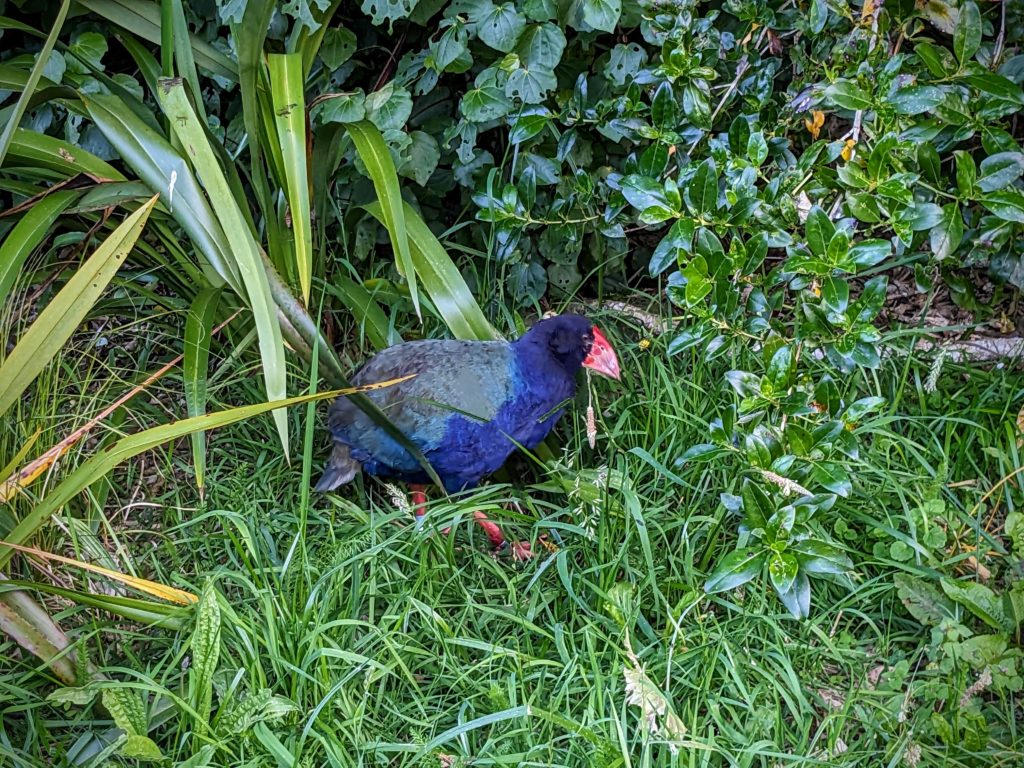
A flightless takahe that is familiar with people strutted around us as it’s history and status as a threatened species was explained. There are only about 500 left in the world.
There is a fenced area inside the fenced sanctuary that is a tuatara research area. I remember learning about ‘the tuatara, the living fossil with a third eye’ back in high school! I don’t remember that it is a species confined to New Zealand!
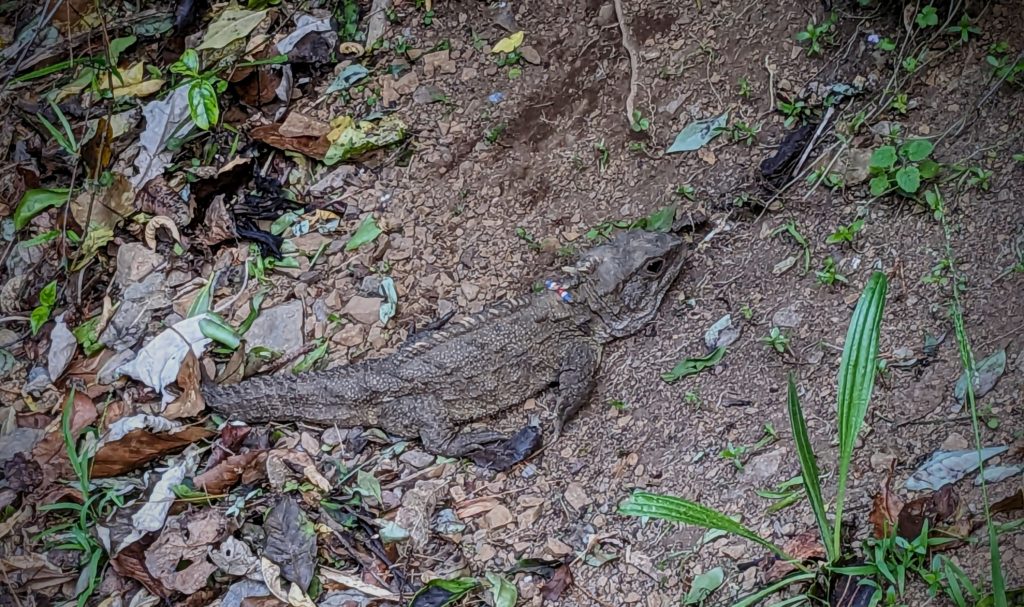
We saw several tuatara, looking like lizards, but they are not lizards, they are however reptiles and the only surviving member of their order Rhynchocephalia. This one sports an identifying beaded ‘necklace’ pierced onto the back of its neck.
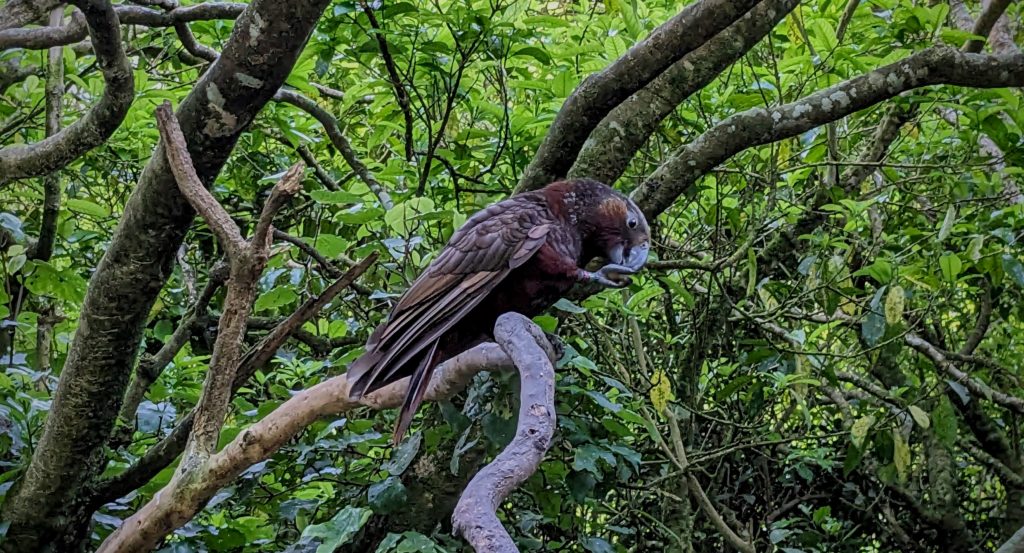
At another stop on our tour we observed several kaka, a large parrot, at a feeding station. The feeders are to encourage the parrots to return to the sanctuary, a safer place to nest, although they are free to fly in and out of the sanctuary.
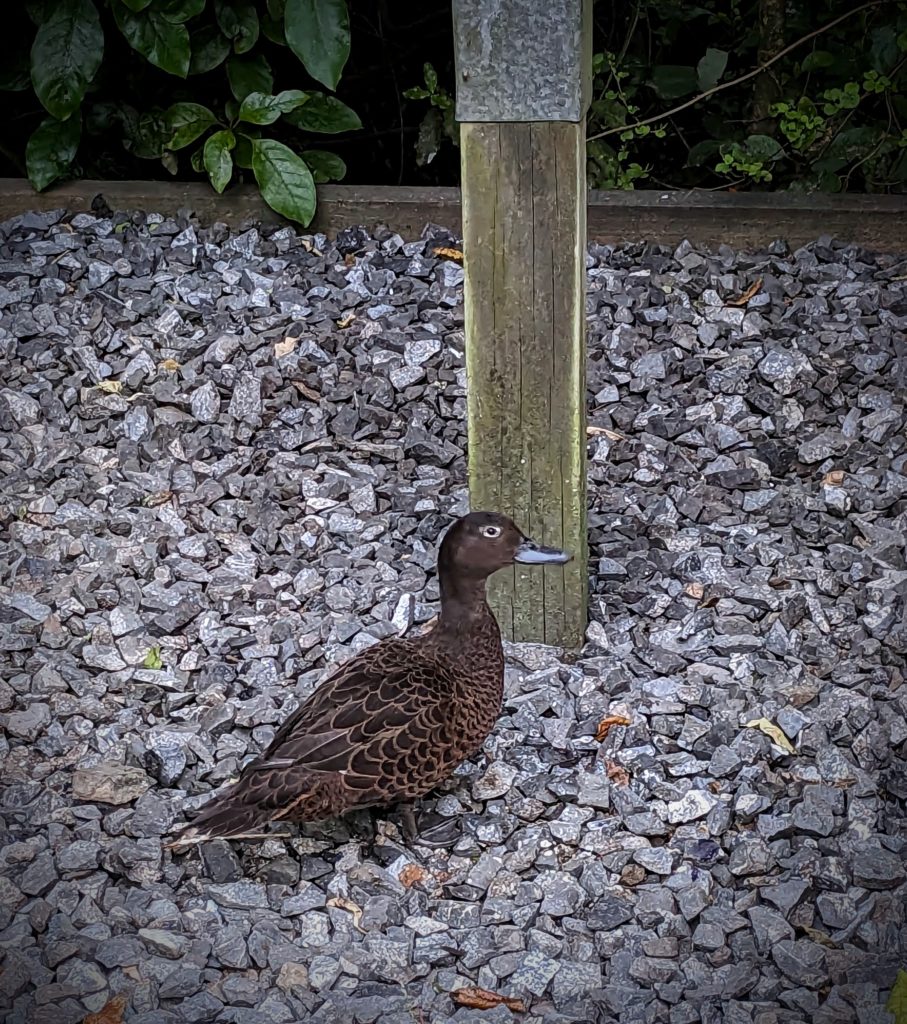
Under the feeding station was a rare duck, a pateke or brown teal, ‘dabbling’ its feet and rooting around in the gravel with its bill for anything the kaka drop, or insects, to eat.
As it darkened we walked through a wetland, on boardwalks over a stream, as our guide pointed out with a red flashlight, tiny fish in the stream, insects bored into tree trunks, and weta that look like giant crickets. As it darkened further she pointed out glow worms under an embankment, and we heard, but did not see kiwi, just waking up for their nocturnal foraging!
We highly recommend Zealandia dusk and night tours! And your ticket allows you entrance the next day so you can check out the sanctuaries diurnal creatures!

December 23rd, 2023 at 9:01 pm
Glad you liked the tour!
December 24th, 2023 at 5:21 pm
Yes! We didn’t get to see kiwis, but everything else was great! Thanks for the recommendation! How was your kayak/canoe trip?